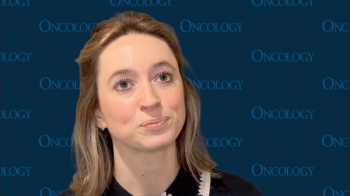
New Genetic Structural Variants Identified in Childhood Leukemias
Previously unrecognized genetic structural variants in childhood leukemias could be used to evaluate the presence of minimal residual disease during chemotherapy and help to determine response to various therapies.
A study, published in BMC Medical Genomics, identified previously unrecognized genetic structural variants in childhood leukemias that could be used to evaluate the presence of minimal residual disease throughout the course of chemotherapy and help to determine response to a number of therapies.1
According to the researchers, further studies utilizing single cell DNA or RNA sequencing that can quantify allele-specific expression would provide important additional insights for mutation co-localization and associated impacts on gene expression and cellular phenotype.
“Hearing that your child has cancer is scary; particularly that the clinical presentation of his disease is unique and there is no other research that matches his case,” Sophie Hayes, mother of a patient at Nemours Children’s Health System, said in a press release.2 “So, when the genomic results came back and showed that Eliot’s cancer was not unique at the genetic level, we were very grateful to the scientific community and to Nemours. This early knowledge enabled us to incorporate an additional line of attack into his treatment and offered us hope.”
Using primary bone marrow samples from pediatric leukemia (n = 32) and adult leukemia subjects (n = 5), as well as cell line MV4-11 and an umbilical cord sample, researchers sequenced the samples using molecular barcoding with targeted DNA and RNA library enrichment techniques. The techniques were based on anchored multiplexed PCR technology, amplicon-based error-corrected sequencing (ECS) or a human cancer transcriptome assay. Additionally, computation analyses were performed to quantitatively evaluate the limit of detection (LOD) for various DNA and RNA lesions.
Matched leukemia patient samples were assessed at 3 time points, including diagnosis, end of induction (EOI), and relapse. Similar to flow cytometry for acute lymphocytic leukemia (ALL) MRD, the LOD for point mutations by these sequencing strategies was ≥ 0.001. In regard to DNA structural variants, FLT3 internal tandem duplication positive cell line and patient samples showed a LOD of ≥ 0.001 in addition to previously unknown copy number losses in leukemia genes.
Moreover, ECS in RNA identified multiple novel gene fusions, including a SPANT-ABL gene fusion in an ALL patient, which could have been used to alter therapy. Together, ECS for RNA showed a quantitative and complex landscape of RNA molecules with 12% of the molecules representing gene fusions, 12% exon duplications, 8% exon deletions, and 68% with retained introns. Further, droplet digital PCR validation of ECS-RNA confirmed results to single mRNA molecule quantities.
“Progress in the field of genomic research and advanced technology has allowed us to find new variants that can better target treatments for kids with cancer,” lead author Erin Crowgey, PhD, director of clinical bioinformatics at Nemours Children’s Health System, said in a press release. “Pediatric leukemias have a diverse and complex genomic structure, and older sequencing techniques were missing a lot of the important information that guides our clinical evaluation, risk identification, and therapeutic strategy for patients.”
The authors noted that the ultimate goal is to bring the genomic testing into routine clinical practice so that it may be used regularly.
“While future ECS-based studies could provide better resolution than current flow-based MRD assays, correlating identified mutations with true disease, risk stratification, and therapeutic selection will require much larger, well phenotype studies,” the authors wrote.
References:
1. Crowgey EL, Mahajan N, Wong WH, et al. Error-corrected sequencing strategies enable comprehensive detection of leukemic mutations relevant for diagnosis and minimal residual disease monitoring. BMC Medical Genomics. doi:10.1186/s12920-020-0671-8.
2. New Genetic Signatures in Childhood Leukemia Create Paths for Precision Medicine [news release]. Wilmington, Delaware. Published March 5, 2020. nemours.mediaroom.com/media-releases?item=122794. Accessed March 12, 2020.
Newsletter
Stay up to date on recent advances in the multidisciplinary approach to cancer.

















































































